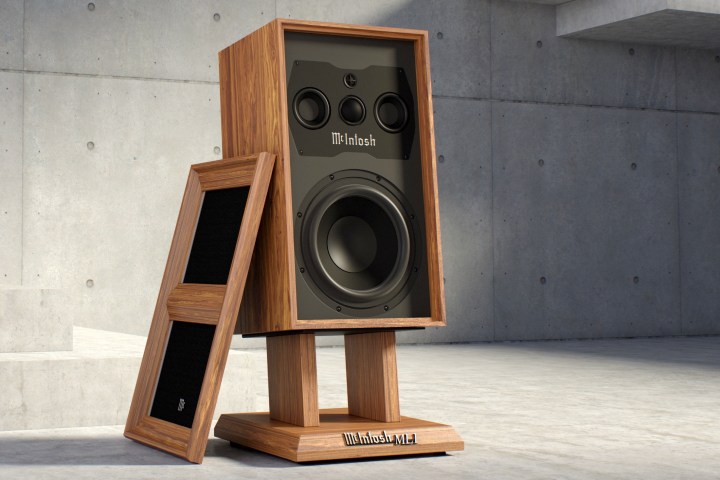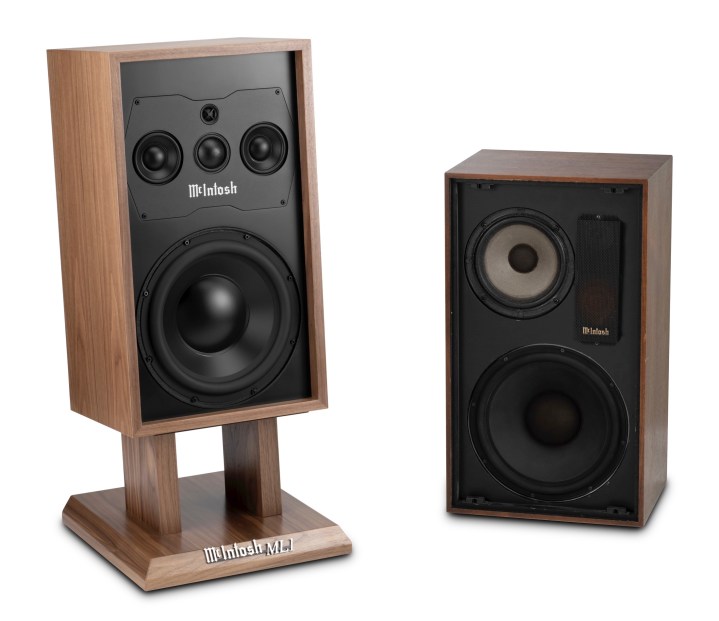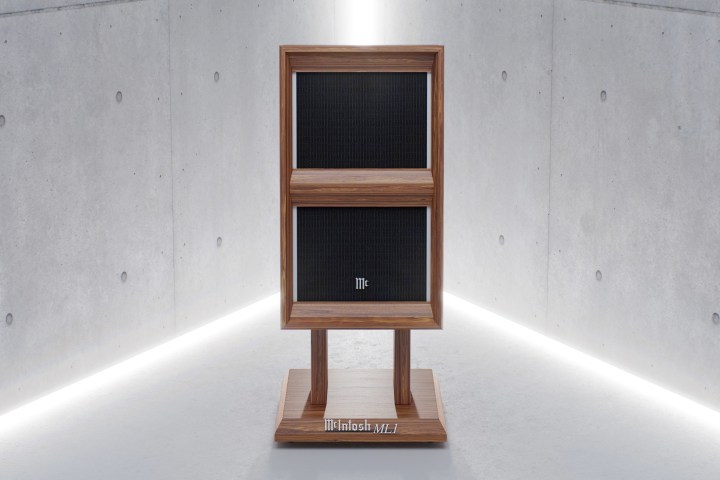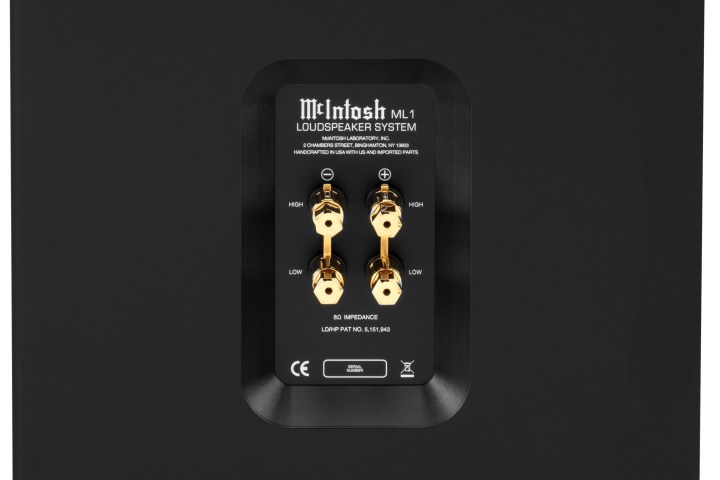
McIntosh might be best known for its receivers and amplifiers — the ones with the iconic blue-backlit VU meters — but the American audio brand has also produced some fine speakers over the years. Today, the company has decided to resurrect its very first model — the ML1 — by maintaining the full vintage vibe of the 1970s era with a boxy, wooden enclosure, while bringing the audio components fully up to date. Acquiring the new ML1 MKII won’t be cheap; each speaker will sell for $6,000 — and that doesn’t include the cost of the optional (but highly desirable) matching wooden stand, complete with aluminum McIntosh badging.

“While we have been making loudspeakers for over five decades,” said McIntosh President Charlie Randall in a press release, “the ML1 will always be our first and holds a special place in our hearts here at McIntosh.”
On the outside, the MKII bears a very strong resemblance to the original, with oiled American walnut solid wood cabinets and satin finish veneers. The removable grille sports the same distinctive wooden crossbeam and black acoustic fabric.

Inside, it’s a different story. The MKII, which can be bi-amped or bi-wired thanks to the twin set of gold-plated binding posts on the rear of the cabinet, is a four-way speaker with five separate drivers: one 12-inch woofer in a sealed enclosure with a polypropylene cone and dust cap with synthetic rubber suspension; two 4-inch lower midrange drivers in a sealed sub-enclosure also with polypropylene cones and dust caps with synthetic rubber suspension; one 2-inch soft dome upper midrange; and one 3/4-inch titanium dome tweeter.
A custom crossover network ensures that each of these drivers gets the right set of frequencies, including that huge woofer, which McIntosh claims can dig all the way down to 27Hz, which approaches the limits of low-frequency human hearing. The company suggests that most folks will feel no need to add a subwoofer.

McIntosh also points out that the four-way design and crossover network give the MKII a much wider dispersion than traditional loudspeakers, which should make the sweet spot as big as an entire room.

These components can handle up to 600 watts of amplification. Unlike the originals, they use a fully symmetrical layout, so there’s no need for a dedicated left or right speaker — the MKII can be used for either side. Another departure from the 1970s-era ML1 is the ability to drive the MKII without any additional external equalizer. The first-gen ML1 was somewhat notorious for needing a McIntosh-built EQ unit in order to hear the speaker’s full potential.
McIntosh also recently released a new Dolby Atmos AV receiver, as well as limited edition, Grateful Dead wireless speakers.
The ML1 MKII will be available through authorized McIntosh dealers for $6,000 per speaker ($12,000 per pair) starting July 2023. The company hasn’t yet released the price of the optional speaker stands.
Editors' Recommendations
- McIntosh and Sonus faber demo a $1 million anniversary sound system at CES 2024
- McIntosh’s bonkers subwoofer stands over six feet tall and weighs as much as a motorcycle
- McIntosh trots out limited-edition wireless speakers for well-heeled Deadheads
- McIntosh brings huge, 24-channel sound to 2022 Jeep Grand Wagoneer




